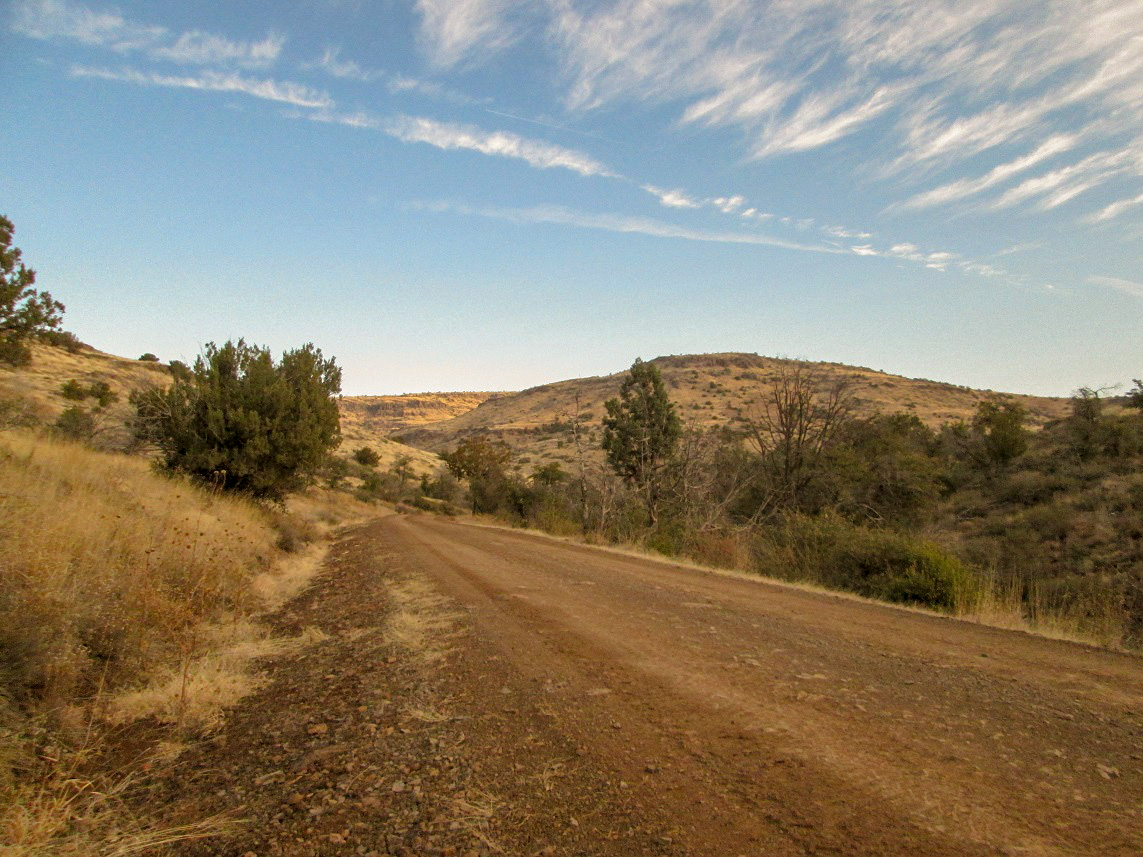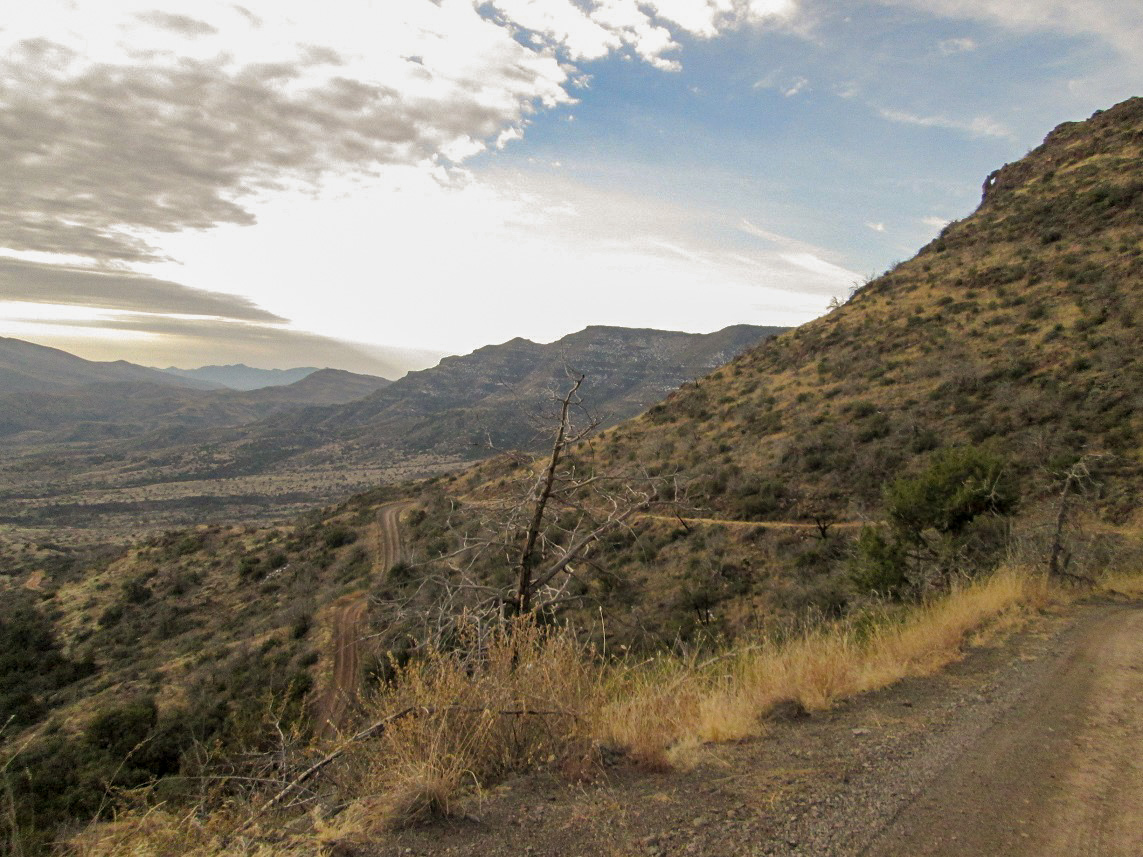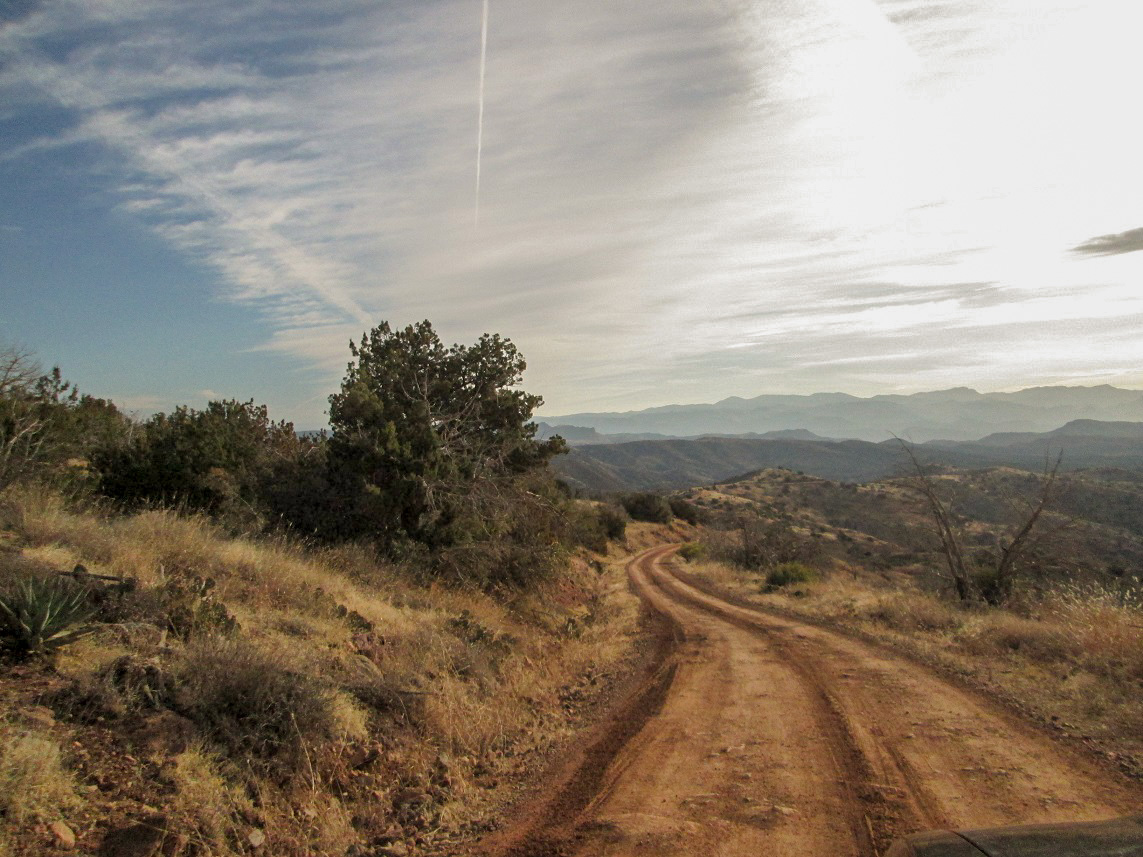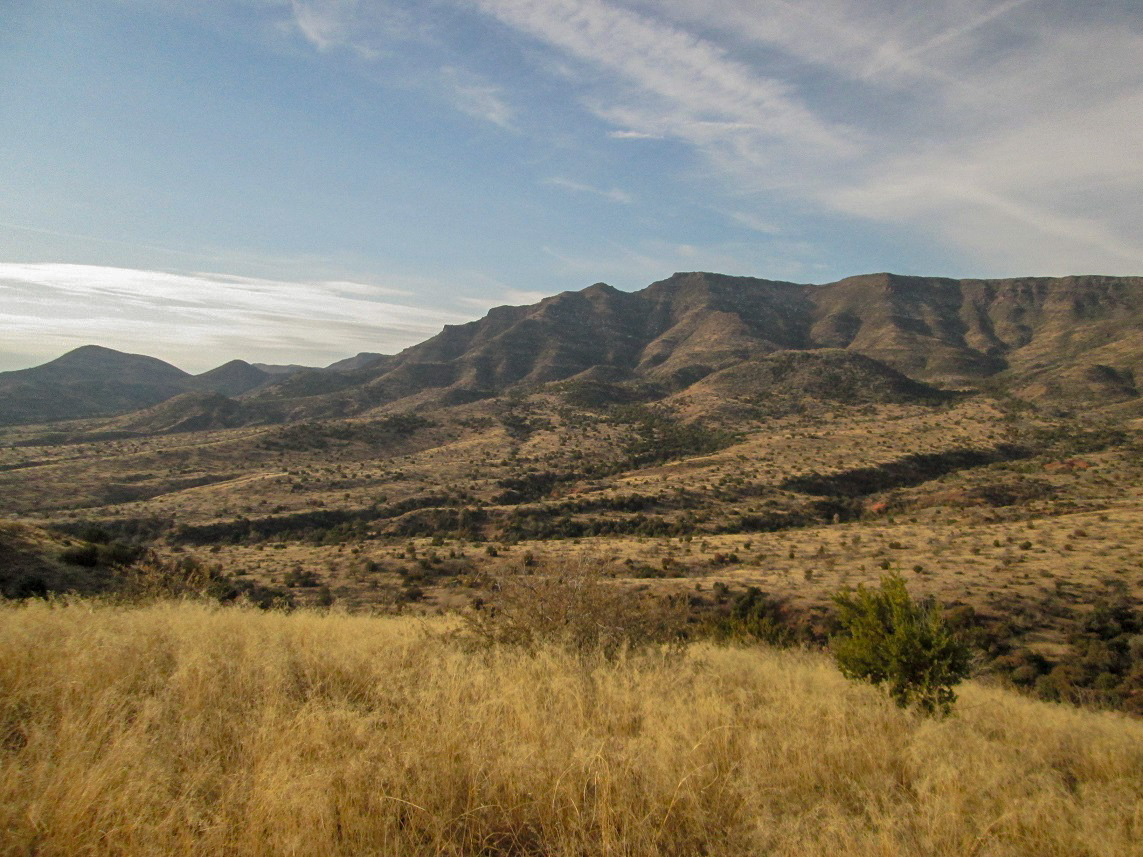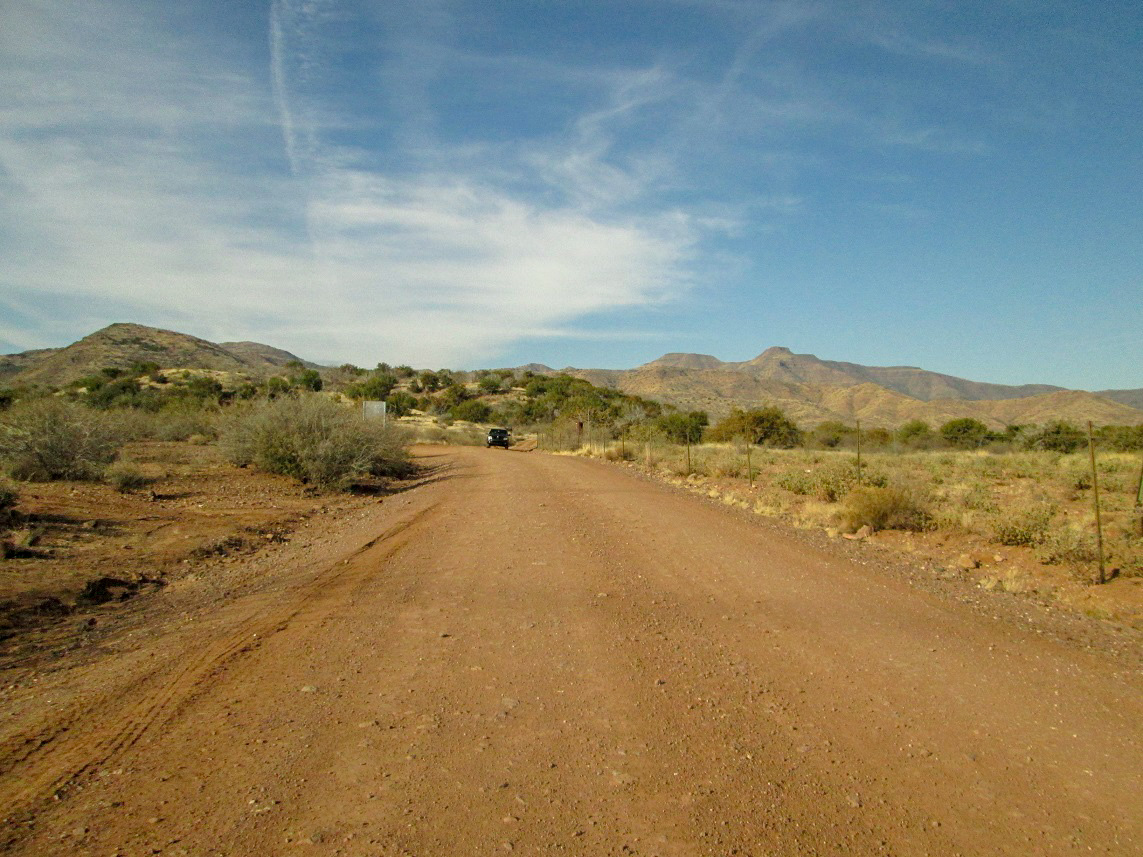
Bloody Basin
Agua Fria National Monument & Tonto National Forest, Arizona • January 8, 2015 |
|
Bloody Basin is a well-known name in Arizona, mainly because there's an exit off of Interstate-17 about 60 miles north of Phoenix for Bloody Basin Road. The actual "Bloody Basin" is about 25 miles east of Interstate-17, at the rim where the mountains and highlands drop into the Verde River Canyons in Yavapai County. The name comes from an 1873 battle between the Tonto-Apache and U. S. forces led by General Crook. The Tonto Indians were known for their stealthy attacks, and this battle essentially brought down the Tonto-Apache. Those who survived were relocated to the San Carlos Nation near Globe.
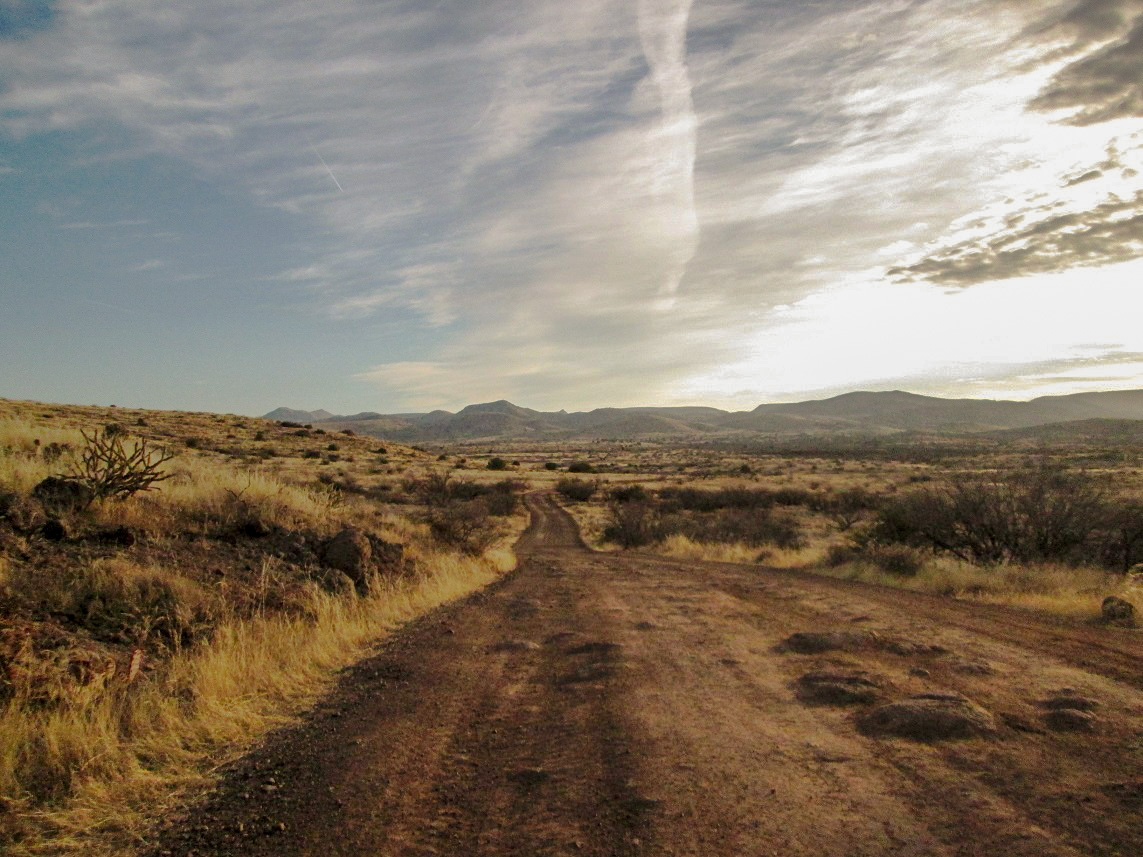 East view, still on the Agua Fria National Monument.
If you believe the sign put up by the Forest Service where Forest Roads 24 and 269 meet, you'd be led to believe that it gets its name from the reddish-colored rocks and cliffs. That's as pansy a description as I have ever read, and offensive since it sidesteps the real reason, which is not mysterious to anyone who barely follows Arizona history. Anyway, the main route into and out of Bloody Basin is via Tonto National Forest Roads 269 from the west, and 24 from the south. It's a drive I have heard about for years, and finally, we decided to go do it, getting up early, and arriving at the Bloody Basin exit at 7 a.m. We parked at the entrance to the Agua Fria National Monument and waited a half hour for the sun to rise. It was chilly where we were, but calm. There were high clouds, but no threats of rain. The initial drive through the Monument is enjoyable. The road is well maintained for four miles, and it meanders through hilly high-desert country. The road narrows and then bypasses the Horseshoe Ranch, at which point the condition worsens. We dropped into the Agua Fria River, which was flowing. I got out to be sure I could ford it in my truck. It looked safe, the flow slow and the depth about 10 inches at most. I was concerned the bottom would be muddy, but it was solid. Past that, we encountered bumpier roads, a small campground, then a 300-foot gain up the side of a mesa, where the road was heavily eroded and in need of a blading. I needed 4-wheel drive here. This turned out to be the worst stretch of the entire drive.
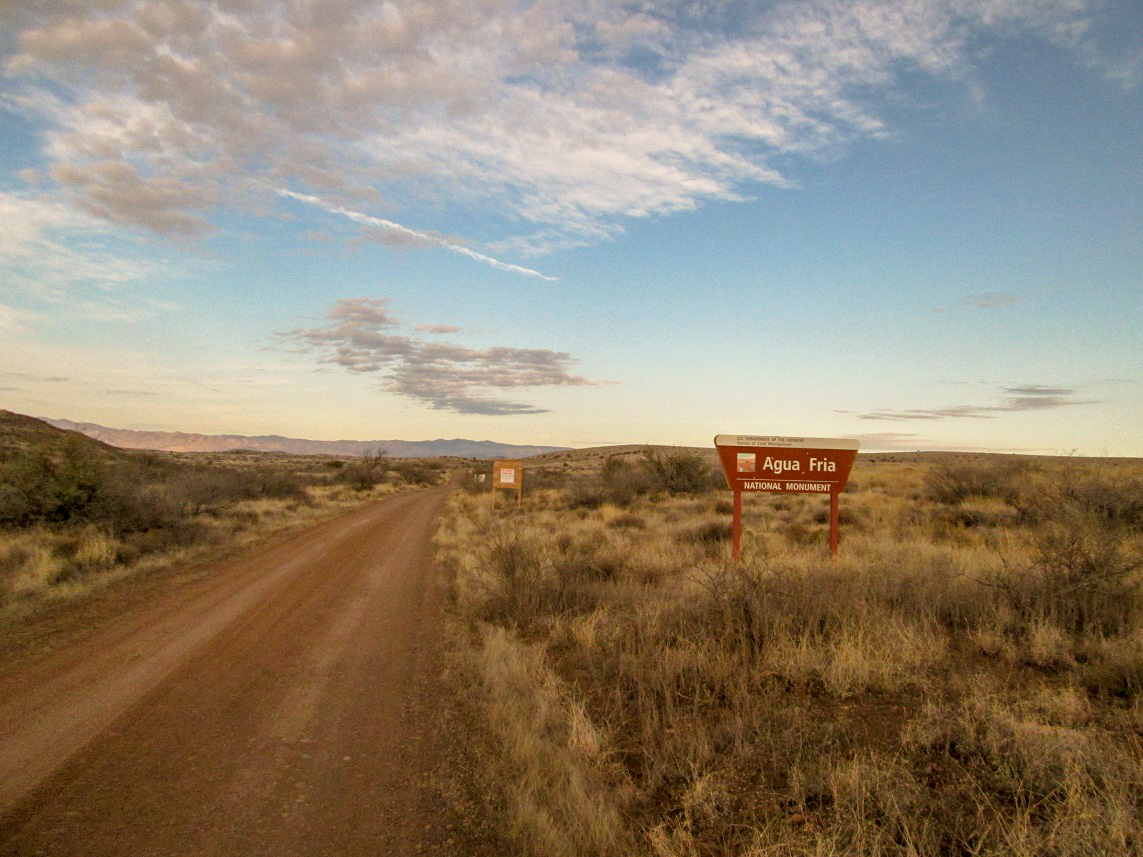 The Agua Fria boundary.
Now on top of this mesa, we rumbled eastward. The road was smoother, but rutted from where people had driven it while wet. This went on for about two miles. Finally, we came to the boundary of the Tonto National Forest and the end of the Agua Fria National Monument. Here, the road's condition improved. There were still sections of rocks and ruts, stretches where it got steep, and even patchy snow from a week ago, so I kept the truck in 4-wheel drive and never got above 15 m.p.h., which was fine since we were enjoying the scenery. There was not a soul back here today. The road climbs to a highpoint at about 4,900 feet elevation, where it crests the cliff rim overlooking the Verde Canyon. This point was about 18 miles from Interstate-17, going by my truck's odometer. The drive down the cliff was spectacular, the road cut in to many twight switchbacks, but always in good condition, although it was steep (about a consistent 7-9% grade). We had awesome views of the surrounding mountains, such as the Cedar Peaks, distant Four Peaks and Mazatzal Peak, and dozens of mesas and hills within the canyon.
 At the cliff rim. Those are the Cedar Peaks ahead.
More toward the bottom, we could see a pointed peak called Turrett Peak. This is where the actual battle took place in 1873. The Tonto were encamped up here, and surprised by Crook's men. Many of the Tonto jumped to their deaths. The rest were hauled away.
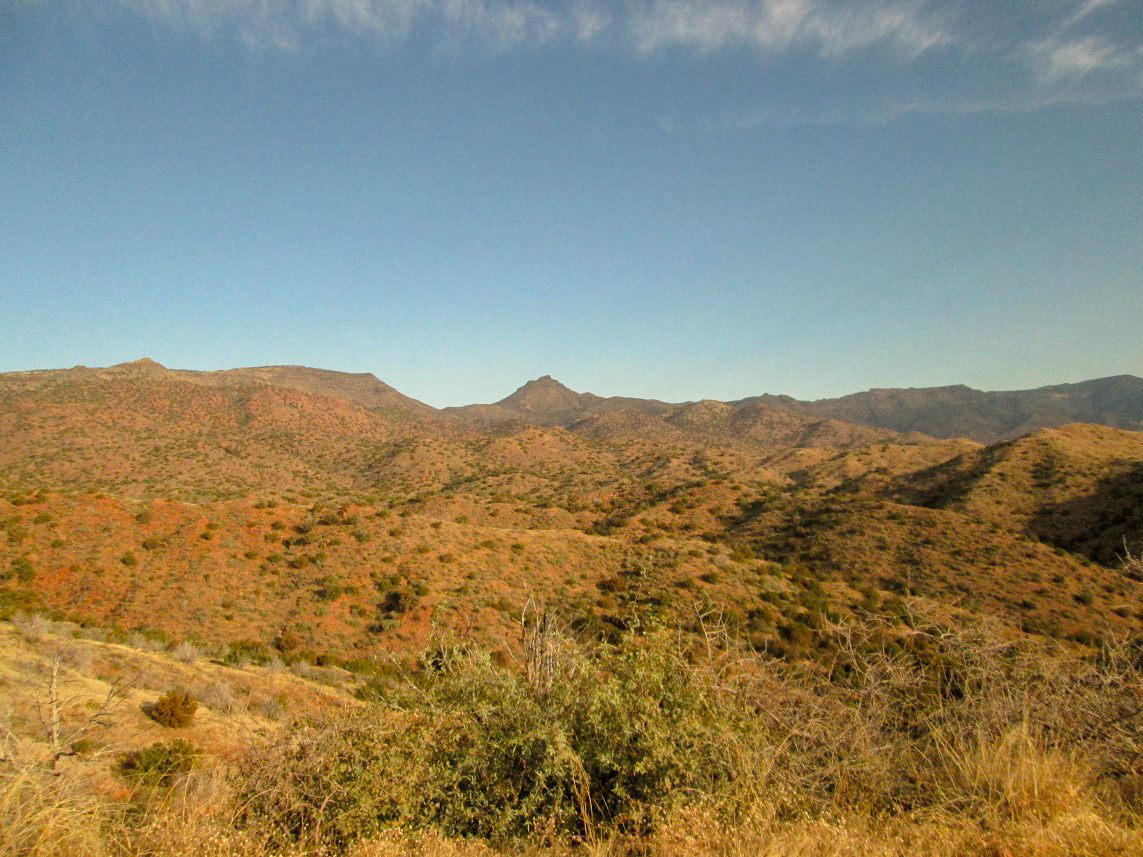 Turrett Peak in the distance, site of the Bloody Basin battle. The road kept high on the ridges before dropping a total of 2,000 feet, bottoming out where it meets with Forest Road 24. Here, we parked, about 25 miles of driving from Interstate-17. I killed the engine and we took a thirty minute break here to walk around and explore. I looked for the "Bloody" USGS Benchmark, supposedly near where the two roads meet, but could not find it. I also read about the area from a forest sign, where my sensibilities were safely not offended by anything truthful about how Bloody Basin got its name. The fact that it gets its name from the red rocks gave me a warm feeling inside, and I smiled.
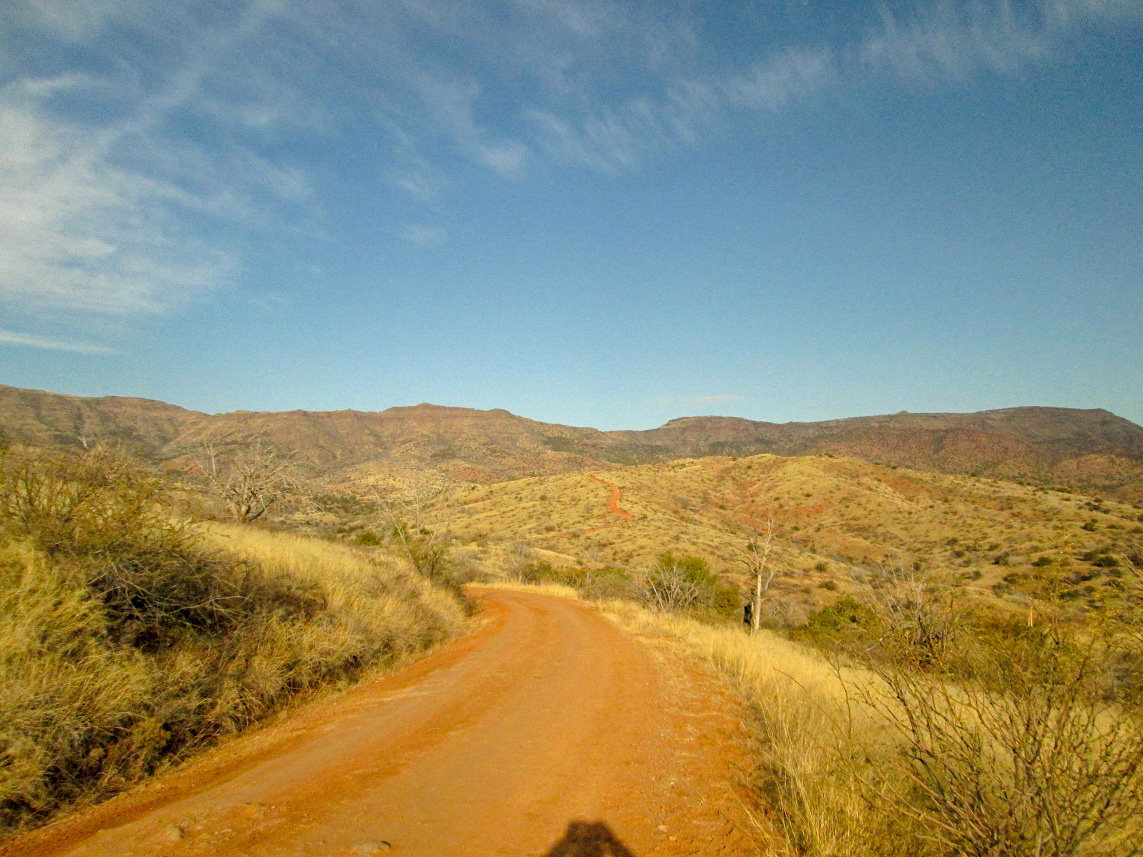 The road we came down starts up on those cliffs at the low point way up there. We exited by driving south on Forest Road 24. This road gains uphill, passes West Cedar Peak, across a couple plateaus, and up mesa-sides, getting as high as about 4,500 feet elevation. We emerged back to pavement in north Scottsdale, the total dirt-road driving covering 45 miles. We were home by noon. Despite the short outing, it was far more than we expected and one of the most spectacular drives we have done in the state. I would suggest that if you do this drive, come in from the Agua Fria side so that you can come down the cliffs, not up, and although most roads were decent, 4-wheel drive will be good to have for the few spots that get rutted or rocky. If it has been wet recently, avoid it because the roads can get slick, and the creek crossing could be flowing.
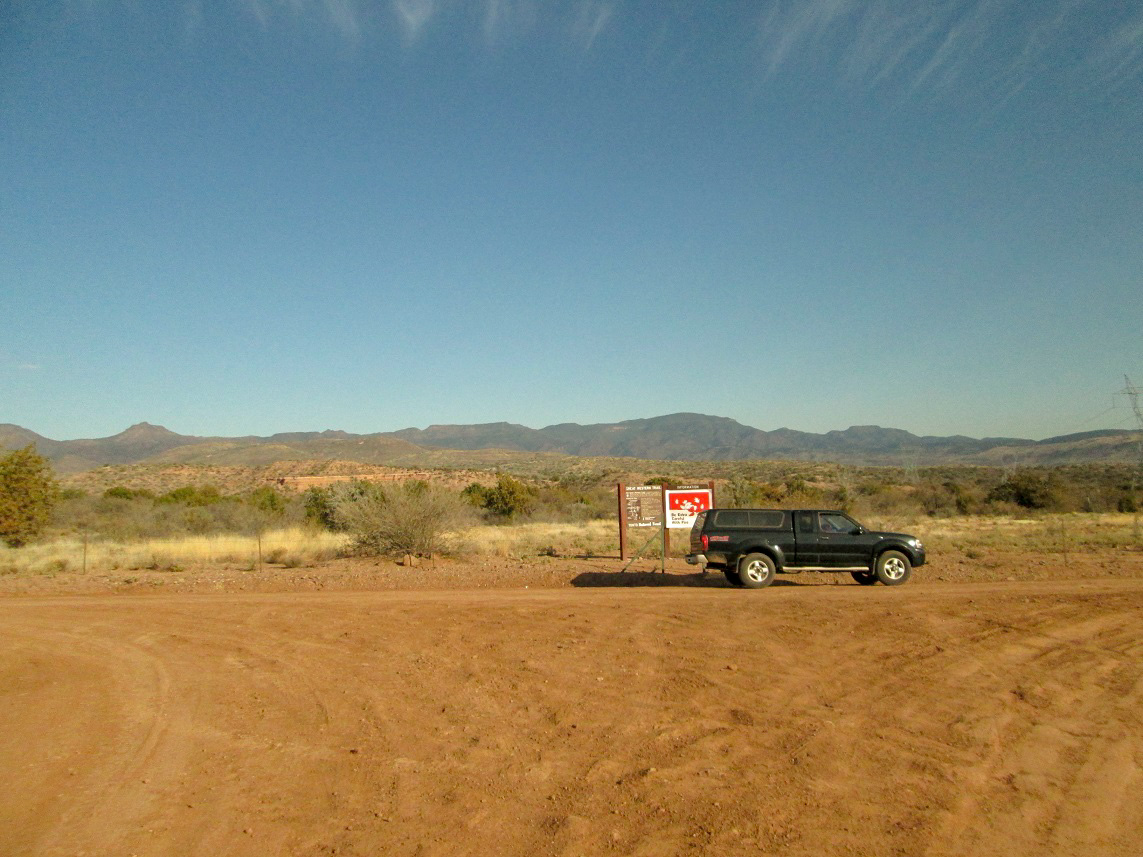 Parked at the junction of FR-269 and FR-24. That's the sign that lies about the origin of the name "Bloody Basin".
|
|
(c) 2015 Scott Surgent. Arizona is so freaking awesome!
|

